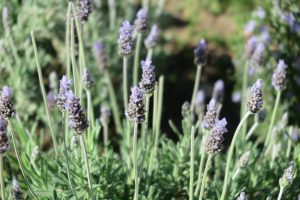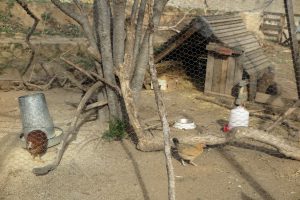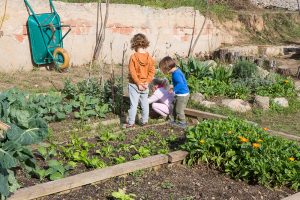We dream of a sustainable future where the grass is green and humans live in perfect harmony with the environment. This utopic vision should not leave us feeling hopeless when confronted with the very real challenges of our times. Crisis like the ones we are facing right now remind us how important resilience is.

How can we live meaningful lives while reducing our impact on limited resources and strengthening our adaptive capacities? The answer might be found very close to home, starting with ourselves, our families and local communities. Which are our basic needs, what really matters to us?
Nature is here to help. Life’s numerous biological cycles when observed with attention can be tuned and integrated with purpose into our surrounding ecosystems in order to tap into the abundance that living systems provide. A few examples of simple processes that have been working for us:
Kitchen scraps are given to the the chicken which produce nutritious eggs, their manure fertilizes the soil and egg shells add calcium to it, in turn this fertility helps to grow more fruits and vegetables.

Chickens also control garden pests, graze the grass and are a source of joy for children. Seeds are germinated, grown into nutritious and beneficial plants, harvested and returned to the soil, the new generation of seeds is saved and resown the next season. Some spaces are left to grow wild in order to attract insects and create habitat for small animals. Every year, new fruit trees and perennials are planted, reducing our dependence on annuals. Citruses, all kinds of berries, grape vines, kiwi vines, persimmon, gojis, figs, medlar, quince, almonds, peaches, plums, pears and apples are all species that function well in our Mediterranean climate.
A water tank catches rainwater from the roof, it serves as habitat for fishes which control the mosquito population by eating the larvae. In turn their excretions fertilize the water, which is gravity fed to the garden for a nutrient rich irrigation. A double plumbing system in the bathroom makes it possible to divert greywater from the bathtub to the garden, helping with the occasional drought in the summer. Very little organic matter leaves the property, almost everything is turned into something else. These cycles of life, death and rebirth are the cogs of nature’s own engineering. How can we assemble these parts with the least effort in order to make them work for us and for the planet?
By storing and releasing energy we feed these cycles and produce a yield. Rainwater and greywater sustain the growth of our garden and our dead wood fuels the fire that keep us warm in winter. Ashes are returned to the soil, and the cycle continues. By preserving produce (canning, dehydrating) we are able to make reserves for times of need, stretching the seasons (the joy of eating dehydrated kiwi slices in the winter!).
Observe and interact, catch and store energy, obtain a yield, apply self-regulation, use renewable resources, value diversity, produce no waste, value slow solutions, respond and adapt to change, etc. Those are a few of the principles that can serve as a guide for designing a more sustainable way of living. This is no Luddite musing, technology used appropriately has also made us more resilient, putting knowledge in the palm of our hands, giving us free time and bettering our lives in many ways. Our way forward might be one of proper balance, favoring what provides the most benefits while doing the least harm possible. Producing some part of what we eat is a great start and has given us a lot of satisfaction.
Last but not least, children absolutely thrive when made to participate in these kinds of meaningful and fun activities! They are our real chance of leaving a positive mark on the planet. By raising kids for whom these concepts are the norm we are planting the seeds of a more sustainable future.

Michael
April 2020
